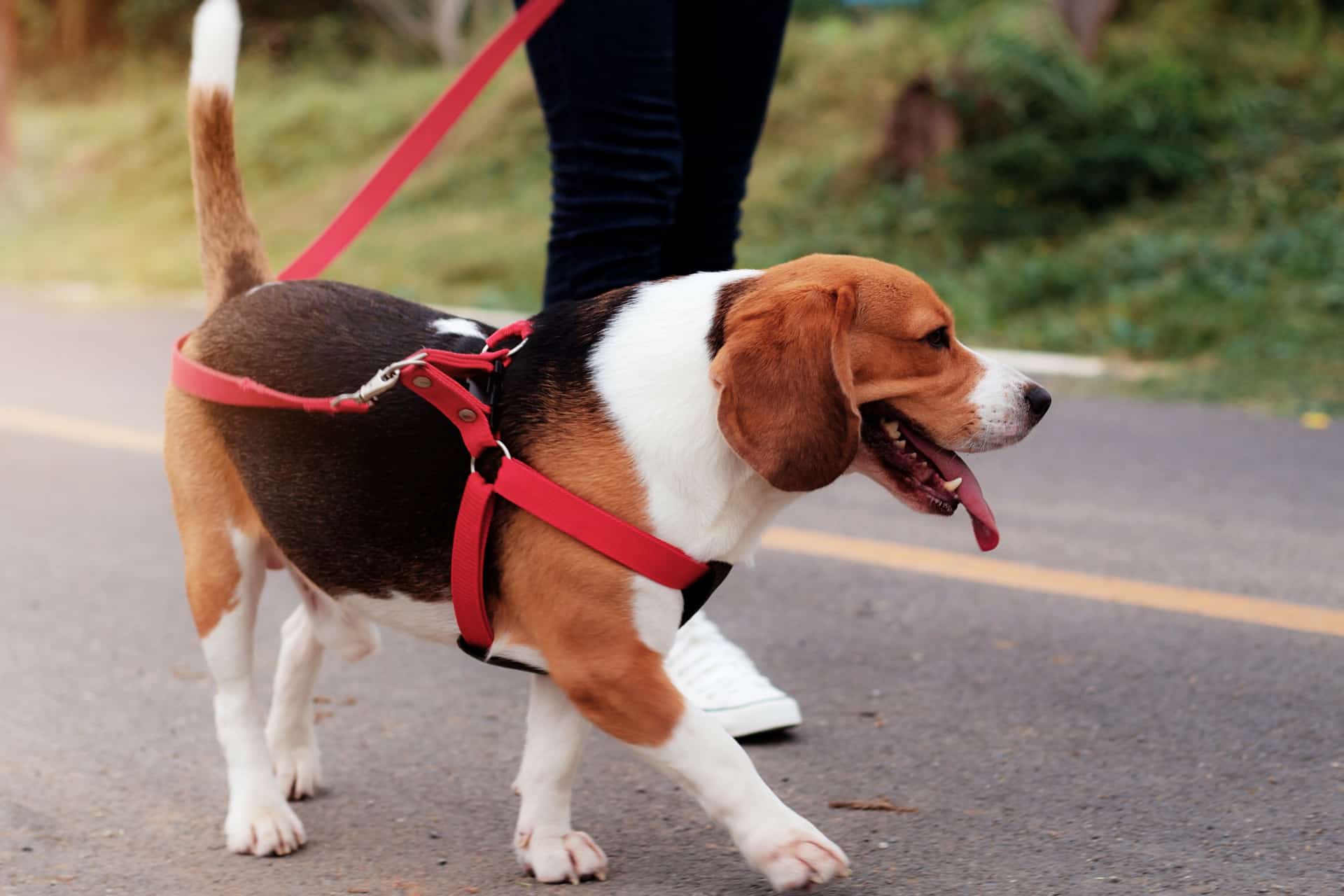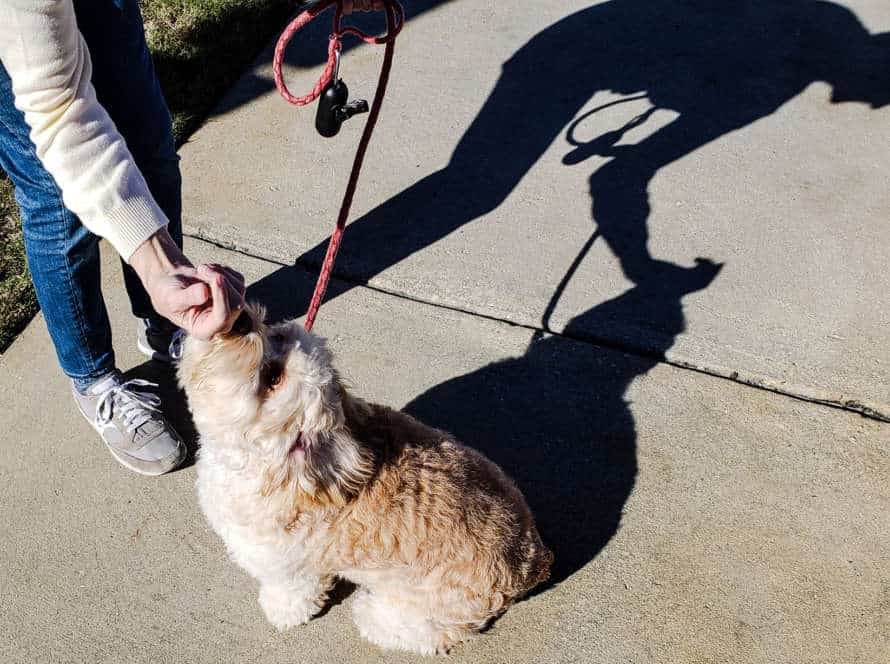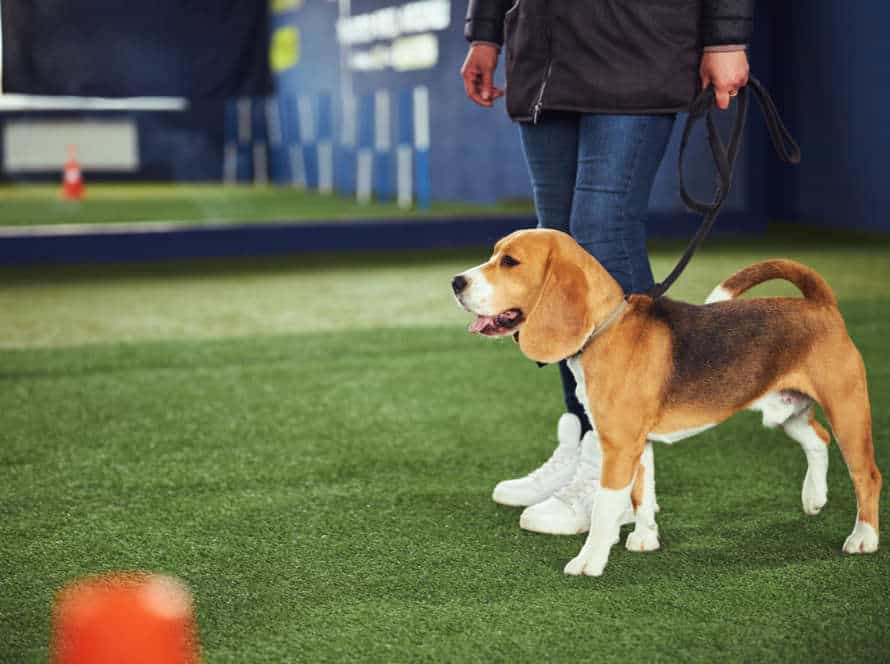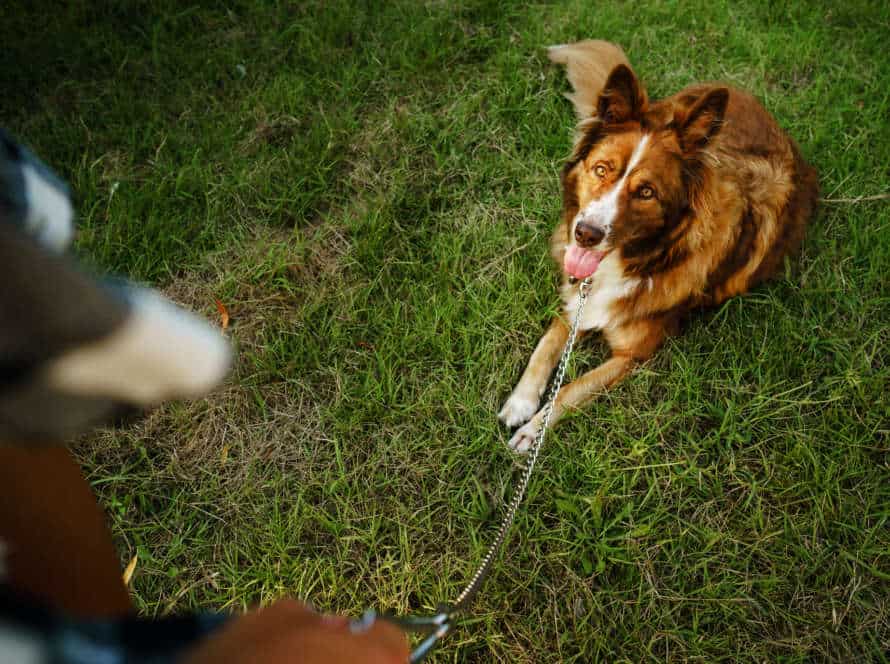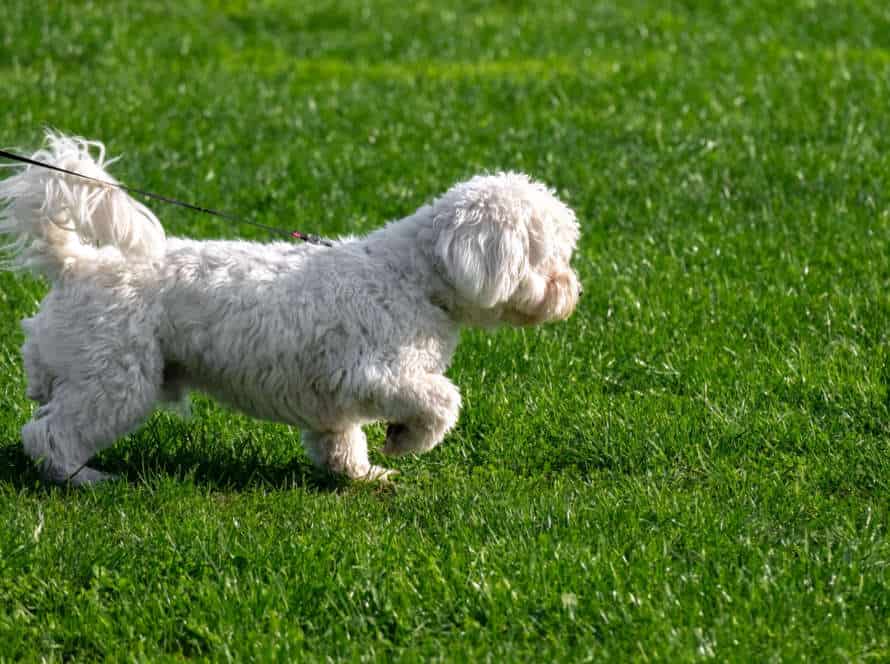Why a Solid Heel Command is important for Enjoyable Walks
Your walks with your pup can be extra-enjoyable if you have a strong heel command! It might take a bit of practice, but teaching this command is really crucial.
Let’s explore why this command is so important and how to teach it to your pup, plus the awesome benefits it yields!
Develops physical health for both canine and owner
Having a solid heel command is essential for fun strolls with your pup and can help you and your dog be healthier. Here are some advantages of a strong heel command:
- Exercise: Going for walks with your pup, and with a solid heel command, can improve your and your pooch’s heart health, muscle strength, and flexibility.
- Focus and discipline: This requires your pup to pay attention and obey you, making them behave better and not get distracted.
- Upping their self-confidence: When they can follow a heel command, they feel more in control, which reduces stress and anxiousness.
- Strengthening the bond: Doing this together can make your relationship stronger and more content.
Train your pup daily to benefit physically and mentally from walks. Pro tip: Use positive reinforcement techniques to reward them and motivate them while they learn.
Increases safety and control while walking
A solid heel command is a must-have for a safe and enjoyable walk with your pup. It teaches them to stay close and obey your cues, reducing the risk of accidents. Plus, it helps you build a leader-follower relationship with your pup.
The benefits of a solid heel command are many! It can:
- Reduce stress and anxiety for your pup on walks.
- Keep your pup from running off or getting lost.
- Allow for better socializing with other dogs and people.
- Improve focus and obedience training.
Teaching your pup a solid heel command can make walking a great experience for both you and your pup!
Helps to reduce stress levels for both canine and owner
Having a solid heel command is essential for both you and your pup to have a stress-relieving, enjoyable walk. Here are some of the benefits:
- Reduced pulling on the leash.
- Clear communication between owner and pup.
- Increased safety in crowded places and unfamiliar surroundings.
- A training tool for discipline.
Therefore, give your pup the time they need to learn a solid heel command. This can help create an enjoyable, stress-free experience for both of you!
How to Train for a Solid Heel Command
A solid heel command can make walks an enjoyable experience for both you and your pup. It’s not just about avoiding lunging or to keep them from running off; it’s about teaching them the skills to walk without pulling on the leash. A well-trained heel command will make your walks safer and more pleasant.
Let’s examine how to train for a solid heel command:
Finding the optimal leash and collar for training
Choosing the right leash and collar is key for successful dog training and teaching a solid heel command for enjoyable walks.
A flat collar or martingale collar is most common for teaching heel. They work best for dogs who don’t pull too much.
A slip collar or pinch collar is good for dogs who do pull excessively, but only use under professional trainer guidance.
A front-clip harness is also good for teaching heel. It gives you better control and helps stop pulling.
For leash, 6-foot standard or retractable is best for training heel. Avoid long leashes, as they limit your control.
Choose high-quality, well-fitting collars and leashes for your dog’s safety and comfort during training.
Establishing basic obedience foundation before heel command training
It’s key to have a solid foundation of obedience before training your pup for the heel command. Here are the must-follow steps:
- Teach your dog to obey commands like ‘sit‘, ‘stay‘, ‘come‘, and ‘down‘.
- Use positive reinforcement, like treats and compliments, to reward good behaviour.
- Practice these commands in a variety of scenarios, with distractions or in various places. This will build your pup’s obedience and trust.
- Once your pup’s mastered the basics, you can move onto training for the heel command. This is important for enjoyable and stress-free walks with your pup. It lets you walk your pup calmly and confidently, without pulling or lunging.
Pro tip: Be constant in your training. Use positive reinforcement to boost your pup’s behaviour. Have patience, and keep training sessions short and frequent. This’ll help keep your pup focused and motivated.
Using positive reinforcement to develop a strong connection and motivation
Positive reinforcement is a great training way to make a strong connection with your dog and encourage them to do good things, such as a solid heel command.
The advantages of using positive reinforcement for a solid heel command include:
- Establishing a strong connection: Positive reinforcement helps build trust between you and your pup, which is essential for a good heel command.
- Enhancing motivation: By praising good behavior, positive reinforcement training will motivate dogs to repeat the same behavior and improve the heel command.
- Increasing fun: A well-trained pup that follows the heel command makes walks even more enjoyable and stress-free for both the pup and the owner.
Pro Tip: It’s important to use small, tasty, and consistent treats to reinforce good behavior. This keeps training positive and rewarding for your pup!
Common Mistakes to Avoid While Training a Heel Command
The Heel command is a must for dog owners! It is important for building a strong bond with your pup. If the Heel command isn’t trained correctly, walks can be tough. But, if taught correctly, walks can be much more enjoyable!
Here are some mistakes to avoid when training the Heel command:
Inconsistency with training
Inconsistency when training your pup is a mistake you want to avoid. It will make walks more fun for both of you! Here’s how:
- Set a schedule for training, same time and place each day.
- Use the same command words, like “heel” or “let’s go”.
- Reward good behaviour with treats, praise and positive reinforcement – always.
- Be patient and consistent with corrections if they stray from the heel position.
Remember, consistency is the key to success. Pro tip: Once your pup has mastered the command, try practising in different environments to keep reinforcing the training.
Lack of patience when dealing with mistakes and setbacks
Patience is key when training your dog to heel. It’s a common mistake to rush things. Just like humans, dogs need time and practice to get it right. Setbacks are part of the learning process. Here are some tips to keep your cool:
- Set realistic goals and progress slowly.
- Use positive reinforcement to reward good behavior.
- Keep training sessions short and enjoyable.
- Be consistent with commands and rewards.
Having a good heel command makes walks fun and stress-free for both you and your pup. So, stay patient, stay calm, and enjoy the journey!
Using negative reinforcement and physical means for training
Negative reinforcement and physical means for dog training are not good. They can harm the dog’s physical and emotional health. Heel command, when trained using positive reinforcement, can benefit both the dog and the owner.
Common mistakes to avoid:
- Don’t use physical force. Dogs respond better to positive reinforcement, not punishment.
- Being inconsistent. Stay with a routine and be consistent with commands and rewards.
- Not enough training time. It takes time to teach a new skill. Be patient and give plenty of time for practice and reinforcement.
- Wrong techniques. Use positive reinforcement techniques, like treats or praise, to teach the heel command.
Benefits of heel command:
- More control over the dog
- Better walking experience
- Improved obedience
- Better communication
Pro Tip: Positive reinforcement training can strengthen the bond between you and your dog and lead to better behavior.
Additional Tips and Tricks for Heel Command Training
Gaining a reliable heel command for your pup is great for happy and secure walks. It takes practice, tolerance, and correct training techniques. Here, we’ll provide more hints and techniques to help you teach your pup an awesome heel command!
Incorporating play and fun into the training process
Incorporating play and fun into the training process is a great way to make heel command training enjoyable for you and your pup. Here are some ideas to make it happen:
- Treats can reward your dog’s progress.
- Toys and games can add an element of play.
- Change up the training environment to keep it exciting.
- Use a friendly voice to encourage obedience.
- Praise and reward your pup for following the heel command. This increases the likelihood of future obedience.
These tips help make heel command training fun for both of you!
Breaking down the training process into manageable steps
Training your pooch to heel need not be difficult! Break it down, and make it a fun time for both of you. Here’s how:
- Start at home or in the backyard, to teach your pup the command in a low distraction environment.
- Train your pup to walk beside you with a loose leash. Use treats or positive reinforcements.
- Increase the difficulty by adding distractions like other dogs or people.
- Be consistent with the command and your expectations daily.
Remember, a solid heel command makes walks more enjoyable for both you and your pup!
Seeking professional help from a trainer if needed
Teaching your pup the ‘heel’ command is great for enjoyable strolls. You may need some help from an expert trainer, so here are a few extra tips to make it easier:
- Praise and treats when they do it right.
- Start in a distraction-free area and step up the challenges as they get better.
- Avoid yanking on the leash or physical punishment, as this might cause fear and anxiety.
- Use a particular phrase such as “heel” or “walk with me” to show them when they should be walking by your side.
Remember that training takes time and patience. Professional help can be the key to success with the ‘heel’ command.
Frequently Asked Questions
1. What is a solid heel command and how does it benefit my dog?
A solid heel command is when a dog is trained to walk beside their owner without pulling on the leash or wandering off. It benefits both the dog and owner by promoting obedience, creating a stronger bond between them, and making walks more enjoyable for both parties.
2. How do I teach my dog a solid heel command?
Consistent training and positive reinforcement are key to teaching a solid heel command. Start by training your dog in a low distraction environment, gradually increasing the difficulty level. Reward your dog for walking beside you, and discourage wandering or pulling by stopping or changing directions.
3. Will this training work for dogs of all ages?
Yes, dogs of all ages can learn a solid heel command with consistent training and reinforcement. However, it may take longer for older dogs who have already developed walking habits.
4. Can a solid heel command solve leash aggression in dogs?
A solid heel command can help prevent leash aggression by teaching your dog to focus on you rather than distractions around them. However, if your dog is already displaying aggressive behavior, additional training and behavior modification may be necessary.
5. Can a solid heel command benefit my dog’s mental health?
Yes, regular exercise and positive reinforcement training can benefit a dog’s mental health by reducing anxiety, boredom, and stress. A solid heel command can also provide mental stimulation for your dog during walks.
6. What are the benefits of a solid heel command for owners?
A solid heel command can make walks more enjoyable and less stressful for owners by allowing them to have more control over their dog’s behavior. It can also promote better communication and bonding between the dog and owner.

